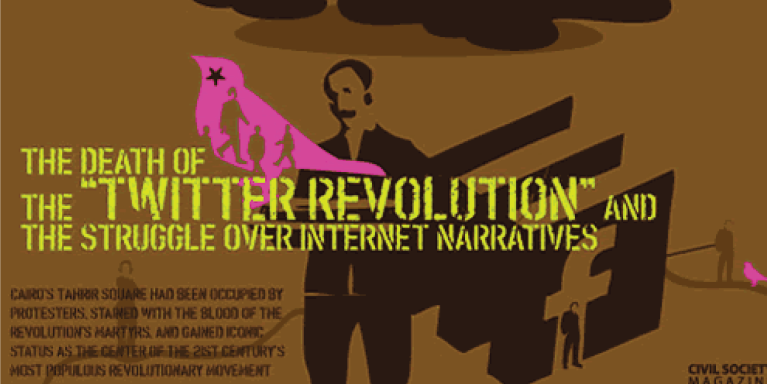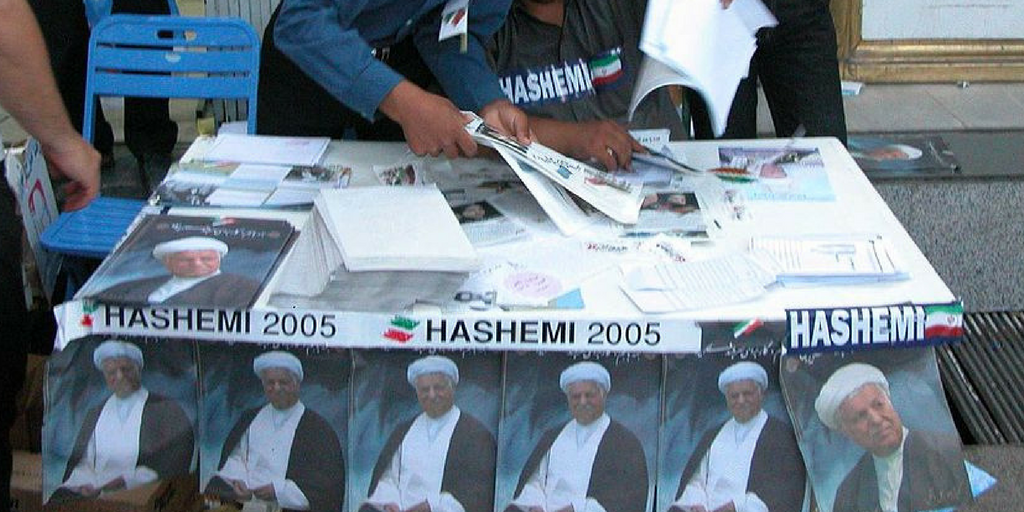
The Death of the “Twitter Revolution” and the Struggle over Internet Narratives
March 15, 2011The death of the “twitter revolution” and the struggle over internet narratives
March 17, 2011
Confrontational Phase: Montazeri
With the introduction of the Internet to the Qom seminaries in the mid-1990s, a number of reformist clerics experimented with the new information technology. In doing so, they mainly followed a group of reformist activists like Akbar Ganji, Mohsen Sazgara and Said Ibrahim Nabavi, who began to recognize the creative potential of the new technology as an alternative outlet for their discontent with the regime. Reformist followers of the new president, including members of Khatami’s cabinet like Mohammad Ali Abtahi, opened up new websites and weblogs. (9) Their strategy was the same as Khatami’s when he debated online his conservative counterpart, Ali Akbar Nateq-e Nori. (10) The Internet was the best place to directly confront the conservatives without censorship and with accountability to the public.
One of the prominent clerics in this phase of experimentation, which early in Khatami’s presidency became increasingly confrontational, was the Grand Ayatollah Morteza Montazeri. Once a senior intellectual and one of the original drafters of the 1978 Constitution, Montazeri was dismissed by Khomeini as his successor in 1989 for, among other reasons, his criticism of the mistreatment and execution of political prisoners. (11) Although he remained mostly quiet throughout the early 1990s, Montazeri’s sudden arrest in November 1997 for criticizing the spiritual authority of Ayatollah Ali Khamenei, the successor to Ayatollah Khomeini and the current supreme leader of Iran, ignited anti-government riots and sporadic skirmishes between his supporters and the security forces in cities such as Isfahan and, nearby, Najafabad, Montazeri’s city of birth.
Inclusive Interpretation of the Iranian Constitution
In contrast to the clerical officials in Tehran, Montazeri advocated a more inclusive, pluralistic interpretation of the Iranian constitution that would give the Iranian populace the right to elect all its leaders, including the supreme leader, who is currently appointed by a body of high-ranking clerics, the Assembly of Experts. By advancing the idea that the clerics must defend the rights of people, especially women, and seek to establish a government that is democratic and yet embodies the ideals of Islamic justice, Montazeri recognized an essential fact: the way to establish a just government is to acknowledge that people understand their own interests. Presuming the masses are rational, he anchors his interpretation upon clerics as advisers (with the power to determine what is just or unjust) in quest of the common good rather than absolute power.
Since 1997, Montazeri faced several attacks by the regime, and he fought back. For instance, in 2000, he threatened the conservative establishment with jihad if Ayatollah Khamenei dismissed President Mohammad Khatami and imposed martial law. This was rumored to be a possibility after the assassination attempt against Said Hajjarian, then a reformist adviser to Khatami. In 2002, while still under house arrest, Montazeri criticized Khamenei’s call for the destruction of Israel and endorsed peaceful coexistence between Palestinians and Israelis. Under Khatami’s presidency, Montazeri’s seminarians, who in the early 1990s clandestinely read his banned books, began to openly spread his ideas at mosques and public gatherings in Isfahan, Qom and Tehran. Despite the gradual increase of censorship in the second half of Khatami’s presidency, newspapers and journals like Farda, Iran Emrouz and Kiyan published Montazeri’s opinions on theology and politics.
Montazeri’s 600-Page Memoir Published Online
The postings on Montazeri’s personal website, which offered detailed information about his biography, religious statements, scholarly texts and discussion on various theological issues, provided a new outlet for the grand ayatollah to express his discontent. For instance, while under house arrest in December 2000, he shocked the conservative establishment when he posted his 600-page memoir. Providing detailed description of some of the most critical moments of the early revolutionary state, including how he tried to prevent the execution of opponents, it was a devastating critique of the Islamic Republic, not only attacking Khamenei and his scholarly credentials, but also rejecting the absolutist ideology of jurist rule, a move considered blasphemous in the eyes of the conservatives.
The state immediately reacted by attempting to filter and limit public access to Montazeri’s website. His seminary also faced renewed threats. (12) Recognizing the potential dangers of the new technology, the conservative-dominated judiciary then began to shut down reformist newspapers such as Neshat, Jameh and Tous and their websites. In November 2001, the judiciary and the powerful Supreme Council for Cultural Revolution implemented further restrictions on the Internet in the same way that they attempted to control satellite television. Internet service providers (ISPs) were forced to remove anti-government and “anti-Islamic” sites from their servers.
These reactive measures in the form of new limitations on Internet use, including the blockage of entire websites, increased in 2002 as the Islamic Republic began to acquire sophisticated filtering programs from China and U.S. companies based in Dubai. The appeal of the Internet seemed to wane in the second part of Khatami’s presidency, as reformists faced continued repression from the conservative factions who in the parliamentary elections of February 2004 consolidated power with the help of the conservative-dominated clerical institution, the Guardian Council, which permitted only conservative candidates to run for election.





